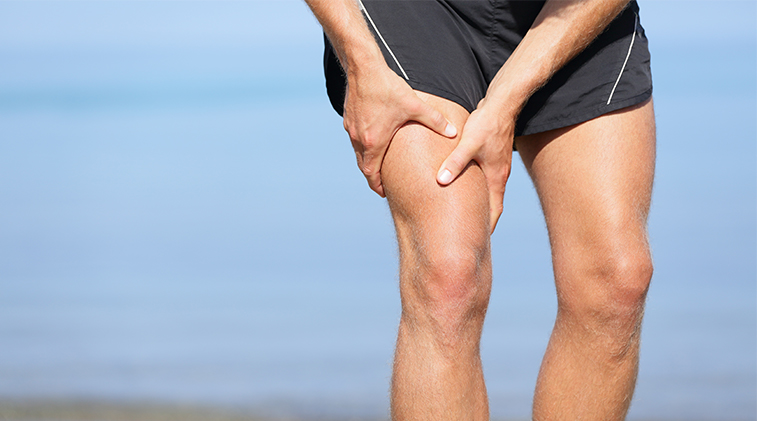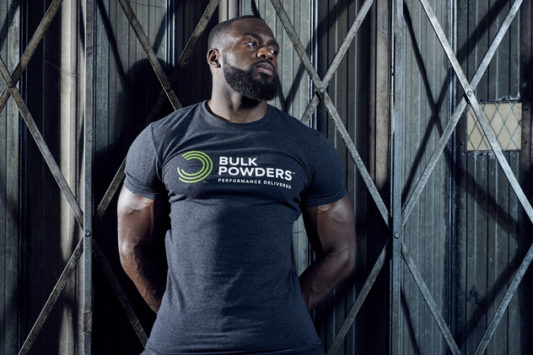How to Recover After a Workout
DOMS can cause muscle weakness and pain in the days following an intense workout. This can prevent you from training on a regular basis and in order to know how to recover, you must first understand why we experience DOMs. There are a number of precautionary steps someone can take to try and lessen the likelihood of getting DOMS, as well as several recovery process techniques to treat it.
What is DOMS?
Delayed Onset Muscle Soreness or DOMS, refers to the pain you may experience after a workout. No matter how many post-workout stretches you do, unfortunately DOMS can sometimes be inevitable. Working out by lifting weights, running or any intensive workout can cause your muscles to contract and lengthen at the same time. The repetitive muscle contractions caused as a result of working out can create microscopic tears in your muscle fibres, which leads to inflammation.
Some may confuse DOMS with a muscle strain, but the two are actually very different. This muscle soreness is a type 1 muscle strain which involves some degree of fibre damage, but it’s not enough to do any permanent harm. Generally, people start to experience the pain at least 8 hours post-workout.
What can trigger it?
DOMS can be triggered by exercise or other physical stress that is out of your comfort zone and normal range of intensity. The level of intensity a person can take before DOMS can take effect varies from person to person, and some research has shown that for some people, the pain can be worse according to genetic factors. So, if you have increased the weight you lift at the gym, this can trigger DOMs the following day.
When you are lifting weights, it’s important to push yourself but to also know the parameters of your body’s limits. When you are lifting weights or doing any workout routine with any goal to reach, the most integral factor of a workout is the schedule you’re using, the intensity or frequency that you have set up. Over-exerting yourself during a workout can actually delay your overall goal and progress, as muscle soreness can prevent you from working out more frequently and can be quite demotivational.
It can happen to anyone, from experienced weightlifters who have not been to the gym for a while, to someone who lifts more than they usually would. The strongest trigger can be eccentric contraction, like your quadriceps tightening while descending. So, although DOMs can be inevitable in some workout situations, it’s important to make sure you work within your bodies limits, otherwise, muscle soreness could become a common occurrence, or worse, could lead to permanent muscle damage.
Recovery Tips after a Workout
Recovery is an important part of every workout. For anybody who is working to become a personal trainer, it’s crucial to fully inform your clients of the risks and consequences of overexertion. Your clients will need to quickly learn that the body’s recovery process is just as important as warming up and it’s important to structure your workout plans based on your client’s strengths but also their limitations.
Here are some of the most commonly used tips to assist you with your post-workout recovery:
Tip 1
Keep hydrated: it may seem like an obvious step, but it’s one that many people forget. When a workout isn’t cardio driven, it can be easy to neglect the body’s need for water. However, research shows that dehydration can increase the symptoms of DOMS. Drink plenty of water during and after your workout.
Tip 2
Stretching: slow, controlled stretching techniques can make your muscles feel looser, thus relieving you of any pain that may occur in the future.
Tip 3
Icing: after an especially intense workout, immersing your body in an ice bath or cold water can reduce swelling and soreness. Alternatively, keeping an ice-pack in the freezer ready for when you get home and applying it to the area for 15 to 20 minutes can also be an effective way of reducing swelling.
Tip 4
If possible, get a massage: after a long or hard training session, athletes often like to get a sports massage to help their body recover. The working of the soft-tissue can increase blood flow, which in turn can reduce the possibility of inflammation after strenuous exercise. The application of pressure can also ease stiffness. If a massage isn’t attainable, try a foam roller. This involves putting your body mass onto a foam roller to effectively give yourself a soft-tissue massage, emulating what a massage therapist can do but for a fraction of the time and price.
Tip 5
Take BCAA to help with muscle soreness. The microscopic tears that occur in your muscle fibres are a result of a breakdown of your muscle protein (MPB) and without the right supplementation or care, this could lead to muscle loss (catabolism). So, to prevent this, we need to stimulate muscle protein synthesis (MPS) by taking protein.
We take BCAAs in order to stimulate this process, which can mean that post-workout muscle soreness is reduced and recovery time is shortened. BCAAs are free amino acids, which means your body doesn’t need to break them down, which means that they can be instantly absorbed to refuel and repair the damaged muscle tissue. A protein shake is broken down by our bodies into individual amino acids, which are then reorganised into new proteins, which can extend the recovery process.
Tip 6
Whey Protein is one of the most commonly used post-workout recovery drinks. This has been a proven remedy for muscle soreness, as whey protein contains all 9 essential amino acids that assist with muscle repair (including BCAAs). In addition to this, whey protein can also help with muscle strength and mass, which can assist you in future workouts and can help you to reach your workout goals.
Reducing DOMS In Future
It’s all very well knowing how to recover from DOMS, but preventing it in the first place should be a priority. Many experts believe that dynamic stretching can be more beneficial than standard stretches, and particularly effective in reducing DOMs after a workout. Try dynamic stretching before a workout as part of your warm-up routine.
In addition, the progression in lifting or workout intensity should be slow and steady. Trying to lift weights extremely out of your comfort zone can be detrimental. Not only can this cause DOMS, but it can also increase the chances of getting muscle strain.
Author: Hannah Darlington


